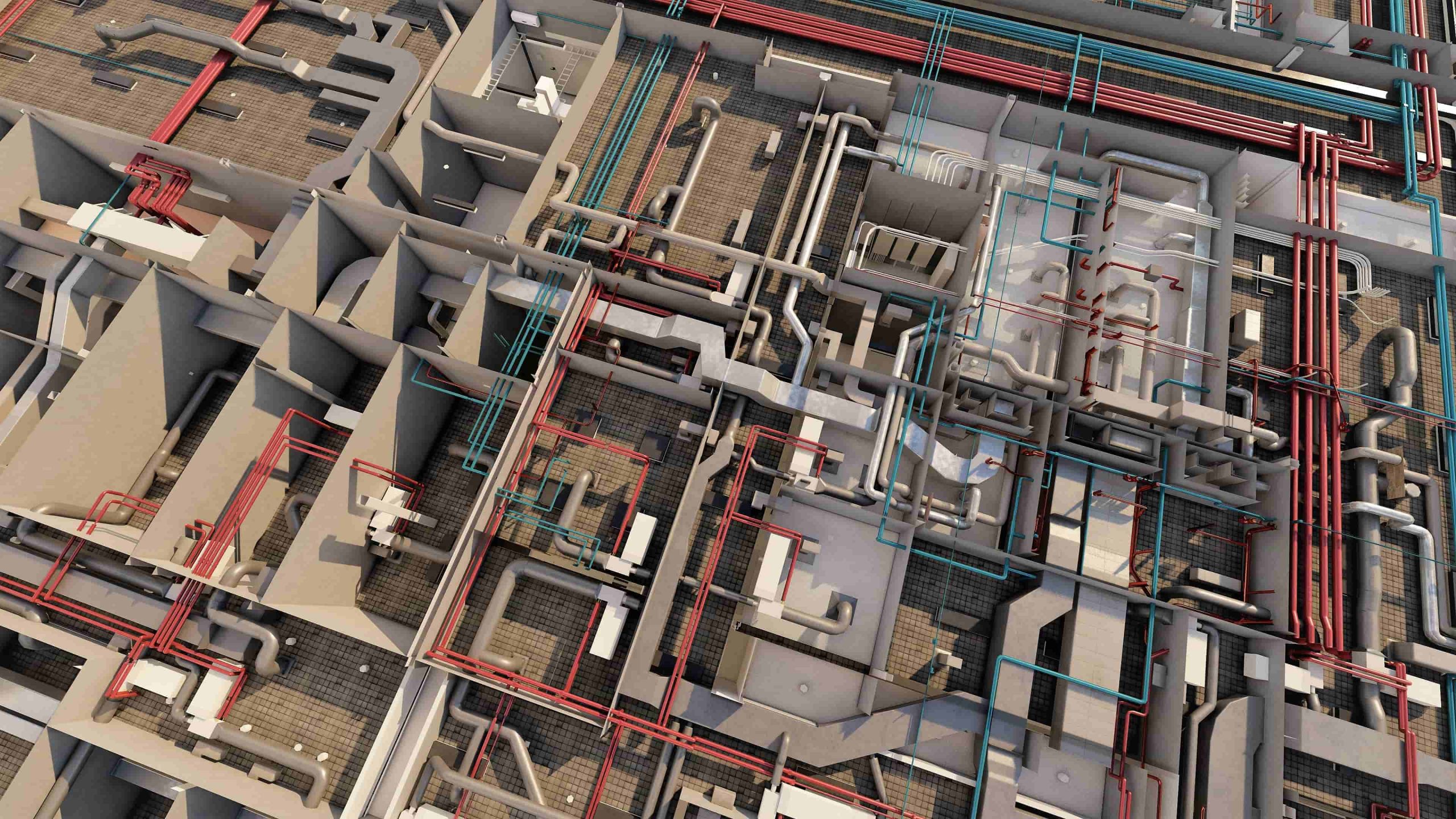
Studies have estimated that a whopping $3.3 trillion investment will be needed yearly in the infrastructures alone. Having said this, it is important to highlight that buildings are currently accounting for nearly 40% of global energy consumption and the coming of newer buildings will have an equally bigger impact on our environment and energy consumption. So, it is important to have ways and means to create buildings that are even more energy-efficient than they are today. Sustainability goes beyond everyday efforts like usage of LED Bulbs or recycling, it especially means going through roots and sources to develop an entire building which is not only cost-effective but energy efficient. One methodology which incorporates the need for renewable energy efficiency in its processes and optimizes the overall building life cycle process is Building Information Modelling (BIM).
Building Performance Simulation:
To simulate the MEP performance of the building BIM solutions like Mechanical BIM services provide a range of powerful tools but Building Energy Modelling (BEM) is only offered by a few BIM service providers in India, as integrated capability. BEM usually helps assess the energy demand, CO2 emissions, indoor environmental quality, and payback periods of energy-saving measures. With such things BEM tools help find if a building design will meet energy regulations or certifications. But BEM does have the potential to go ahead of the designing phase, by having control in actual operations of the building. While most energy modeling occurs when the design reaches completion with the use of a separate energy model, BIM integration will bring the energy analysis at the conception period thereby allowing more informed designing to take place.
Greater Accuracy with Detailed information:
Some of the energy modeling tools use a wide range of parameters to estimate the performance of the energy consumption of the building. These could be zones, structure, control scenarios, rooms, equipment, and could be directly extracted using the BIM system. However, a more detailed level of information on energy characteristics is needed for comprehensive energy modeling, which can be added through BIM objects. So, for having effective energy modeling, the designer needs to make sure that there is the right amount of information attached to each piece of equipment say for example, including at least power consumption or cooling and heating capacity for HVAC equipment. Moreover, BIM designing usually uses multiple tools with a different focus from the BIM tool for building models to tools used for structural modeling and the MEP coordination process to the BEM tool for energy modeling. The key is to integrate different models and tools.
Let us understand how BIM Modelling service assists in energy efficiency through a step by step analysis:
- Modeling for Smart Buildings: While having known that BIM works through planning, designing, and modeling phases, it is important that contractors make an account for the energy impact each plan and model will have. This will help analyze the different effects each design will have on its environment and surroundings, and then BIM designing choose among the most efficient energy models. Further, along with this, there should be consideration of smart building options in mind, like having energy-saving products utilized from the start. Renewable energy can be used from different channels like designing with the sun or using solar power mechanisms. From energy-efficient refrigerators to HVAC systems every device becomes critical in the building process. BIM accounts for everything during the modeling stage to see the overall impact.
- Planning: BIM is all about planning. It provides critical information for every team member involved from architects to contractors. The system shows how things and materials will hold up with time. Optimal energy efficiency means having a longer lifespan and so the renewable and efficient options for power should withstand in the long run along with giving optimal performance. Having this long-term road planned is the key.
- Greener Infrastructure: Having options that make the infrastructure greener brings for the highest efficiency. Say using natural lighting will decrease the usage of artificial light so the energy consumption and wastage is reduced. So, with BIM, a building can be designed to accommodate the sunrise and sunset which will impact the heating and cooling needs organically. Not only this, but the sustainable materials utilized also becomes an integral part of the energy efficiency of the building.
- Collaboration and Transparency: With BIM collaboration every team member comes up with different ideas on renewable energy and communicates effectively on the same. There are lesser clashes that will directly help in bringing about more renewable options. This can also bring more transparency to the table not only within the team members but for the project overall. While social pressure and demands need everything to be present on the face value BIM helps showcase concrete plans and statistics that were recorded effectively. With transparency maintained at every phase, each professional can see the energy plans and change it to enhance it even more.
- Error Reduction and Faster Processing: Once the energy-efficient plan is fixed it then moves to implementation on-site. It is important to note that the MEP BIM Coordination services help remove clashes at the initial phase and so the number of errors that occur when construction takes place is reduced greatly. This means the overall construction process becomes faster. Having this process efficient and streamlined in advance will mean the overall energy usage and emissions from construction vehicles and building materials are highly decreased; thereby making the on-site construction more energy friendly.
- Maintenance Efficiency: With BIM designing extended to maintenance post-deployment, it will showcase the performance of the building and how long a power system can last there. The insights that the BIM data provide will bring about the necessary maintenance needed. This becomes crucial because a damaged, exhausted, or inefficient system can waste more energy than save thereby creating big money losses. To continue running smoothly and efficiently, BIM services provide information about updates, changes, etc., beforehand.
Having seen how BIM helps through the planning, designing, modeling, and construction phases, we also need to note that buildings contribute to a significant amount of carbon emissions and electricity overconsumption. Through merely power consumption, these structures release up to 33% of greenhouse emissions. So, BIM is the only solution that helps reduce this percentage in every aspect, be it energy production, wastage, or usage. With more energy conscious plans, the builders and contractors can reduce their emissions on-site and bring about BIM renewable energy buildings.











